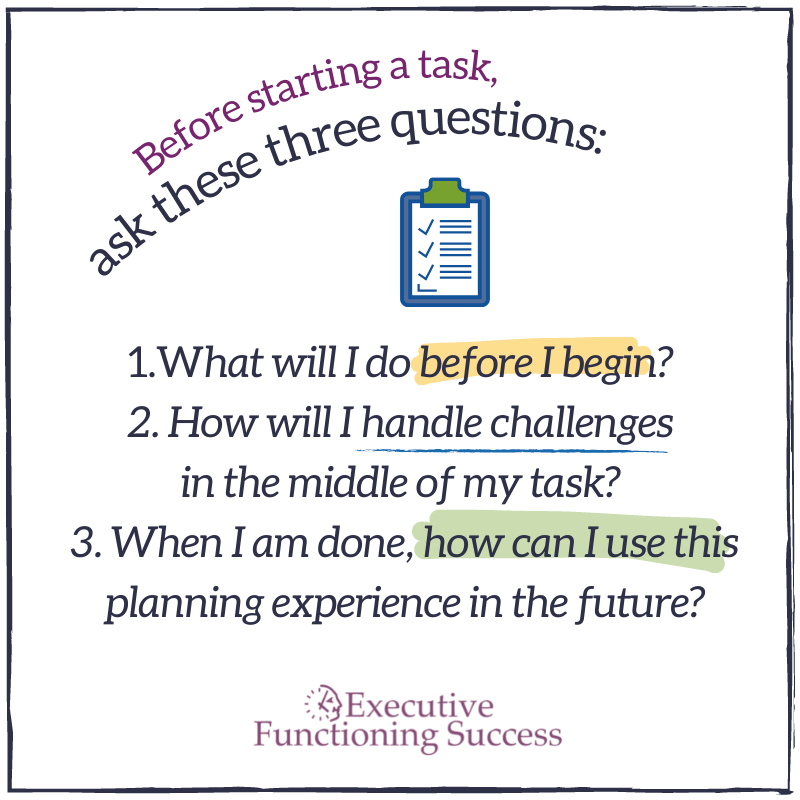I recently watched a Learning and the Brain webinar, taught by the team of Jack Naglieri and Kathleen Kryza. The topic was, unsurprisingly, executive functioning.
I confess, it took some effort to sign up. After all, I spend my workdays on Zoom teaching folks about their brains and executive functions. Just the thought of giving over three hours of a priceless Saturday morning to the topic was, well, tough. But I did it, knowing full well that somewhere in all of their content would be a new gem that I could share, increasing my own knowledge and perspective.
I was not disappointed.
Since the primary audience for this webinar was educators, there were two key questions raised:
- Can you teach executive functions?
- If so, how does one teach them?
Dr. Naglieri has the research to show that, YES, you can teach executive functions if you approach it from the right direction.
How to Teach Executive Functions
I was pleased to see that Naglieri’s research aligns with my own approach in Seeing My Time. That is, you don’t start with strategies. First, you teach students background information about their brain, laying the foundation of “why” we act as we do. Then, you give them the opportunity to build their own metacognitive capacity to problem-solve for their specific challenges.
In this process, the teacher or parent’s job is to share their own thought processes and strategic options. The “how” is modeled rather than directly instructed.
 The point of this modeling method (here comes the gem!) is for the student to have a plan in their own head. You want them to consciously ask themselves three questions: What will I do before I begin? How will I handle the challenges in the middle of my task? And when I am done, how can I can use this planning experience in the future?
The point of this modeling method (here comes the gem!) is for the student to have a plan in their own head. You want them to consciously ask themselves three questions: What will I do before I begin? How will I handle the challenges in the middle of my task? And when I am done, how can I can use this planning experience in the future?
While I have long known that metacognition is the basis for behavior change, I had never broken that thought process into three distinct plans. Bingo! Weakness in the executive function of planning is huge for so many people. It’s why many adults seek out my help.
Thanks to Naglieri and Kryza, I now have another angle to discuss planning and how it directly ties to our daily to-do list, be it a school assignment or completing a task at work or home.
So here’s how to think about this three-step process, using the acronym: BCE. For each letter, you will be pausing to activate your metacognition and develop a plan.
B Stands for “Before I Begin”
Answer this question: Before I begin, I need to ______.
- Make a to-do list, including time circles for each task (frees space in your brain and helps with focus and motivation).
- Turn off my cell phone and put it out of sight (limit distractions).
- Have a drink of water and a small protein snack (feed your brain and body for energy).
- Check online to see the details about the assignment (get a clear picture of expectations).
- Gather my materials: pencils, computer/tablet, book, etc. (stay on task).
- Set a timer for an achievable amount of time to make progress (activate dopamine for motivation).

C Stands for “Challenges”
Imagine the challenges or problems that might stop you from completing this task.
Answer this question: If this gets hard or I get stuck, I will ________:
- Calm my brain before my amygdala takes over and I get stuck in feeling helpless and hopeless. Activate your parasympathetic nervous system – slow breathing, creating a slight arch in your lower back. Visualize a peaceful place, noticing all the details of that place – the colors and sounds and textures. In other words, get out of your emotional brain.
- Look online for a video of someone else solving this same kind of problem. It is amazing the kinds of problems I’ve been able to solve following the guidance of someone online, including math problems.
- Call on a friend to ask for help. Students should have the contact information for at least two people in each of their classes. Learning to ask for help from peers is a key skill of being a successful adult.
- Clear up my confusion. Contact the teacher, (or supervisor/boss), and ask for help when directions aren’t clear or the next steps are overwhelming. It can take courage to ask for help. With someone else, or in front of the mirror, practice the words you will use.
E stands for “End Evaluation”
When you are done, answer these questions:
- How did my B and C planning work out?
- Which plans worked well for starting?
- Which plans helped me with challenges that came up?
- What other strategies could I add next time to my planning?
- When could I use these B and C plans again?
Consciously using this BCE approach to planning before you start a complex task or assignment is key to building strong metacognition, which is the foundation for executive functioning and your capacity to change behavior.
I hope this “gem” is valuable for you too!
Little by little,
Marydee

